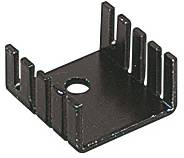I don't recommend using a constant-current IC to drive 3 parallel bulbs. If one bulb goes out, its current will be forced into the other 2 bulbs. Instead I suggest a constant-voltage solution like the diode method you show. If one bulb goes out, the remaining bulbs are not affected.
Is it possible/practical to re-wire the 3 marker bulbs in series? This would give you a 4.5V load requiring 30mA rather than a 1.5V load requiring 90mA.
But assuming the objective is 1.5V,
this thread shows a circuit which generates 3V DC to illuminate some bulbs. A parts list is given to give you an idea of parts cost. By simply altering the resistor values this circuit can generate 1.5V instead and easily handle 90mA. Since you already have a rectifier and capacitor for your LEDs, it may be that all you need are the LM317T and two resistors - sort of like the 4.5V add-on circuit shown later in the thread. If this approach is something you'd like to pursue, we can get into the specifics.
BTW, the LM317 with a single extra resistor can perform the function of a CL2N3. While you can't beat the convenience of a single chip that generates 20mA with no additional fuss, if you're assembling a bunch of parts anyway, the LM317+resistor approach can lower cost. The resistor value sets the current level so you aren't limited to 20mA. The LM317 is more widely available than the CL2N3.





